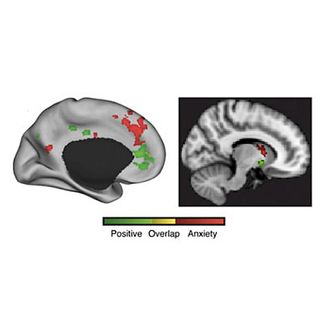
Concepts like decision paralysis and decision fatigue are pretty hot right now among folks who study human behavior. Everyone, after all, has to make a lot of day-to-day decisions, and everyone can identify with the unpleasant feelings that can often result. A new study in Proceedings of the National Academy of Sciences shines some light on the nature of this sort of anxiety, and shows, perhaps unsurprisingly, that it’s most potent when we’re choosing between two things that we both greatly covet.
To the press release:
Choices between two highly valued items (high-high), such as a digital camera and a camcorder, were associated with the most positive feelings and the greatest anxiety, compared with choices between items of low value (low-low), like a desk lamp and a water bottle, or between items of different values (low-high). Functional MRI scans showed activity in two regions of the brain, the striatum and the prefrontal cortex, both known to be involved in decision-making. Interestingly, lower parts of both regions were more active when subjects felt excited about being offered the choice, while activity in upper parts was strongly tied to feelings of anxiety.
This evidence that parallel brain circuits are associated with opposing emotional reactions helps to answer a puzzling question, according to [lead researcher Amitai] Shenhav: “Why isn’t our positivity quelled by our anxiety, or our anxiety quelled by the fact that we’re getting this really good thing at the end? This suggests that it’s because these circuits evolved for two different reasons,” he said. “One of them is about evaluating the thing we’re going to get, and the other is about guiding our actions and working out how difficult the choice will be.”
It’s a useful reminder that the brain isn’t monolithic: It consists of various partially independent systems layered atop each other, sometimes a bit sloppily, that can have different goals or reactions to external stimuli. One remarkable (albeit medically induced) example is what happens to some patients who have the corpus callosum, which connects the brain’s two hemispheres, severed to help control seizures.
As a 2012 article in Nature explains:
In the first months after her surgery, shopping for groceries was infuriating. Standing in the supermarket aisle, Vicki would look at an item on the shelf and know that she wanted to place it in her trolley — but she couldn’t. “I’d reach with my right for the thing I wanted, but the left would come in and they’d kind of fight,” she says. “Almost like repelling magnets.” Picking out food for the week was a two-, sometimes three-hour ordeal. Getting dressed posed a similar challenge: Vicki couldn’t reconcile what she wanted to put on with what her hands were doing. Sometimes she ended up wearing three outfits at once. “I’d have to dump all the clothes on the bed, catch my breath and start again.”
Okay, so maybe those of us with fully intact brains shouldn’t complain too much about our decision-making difficulties.




